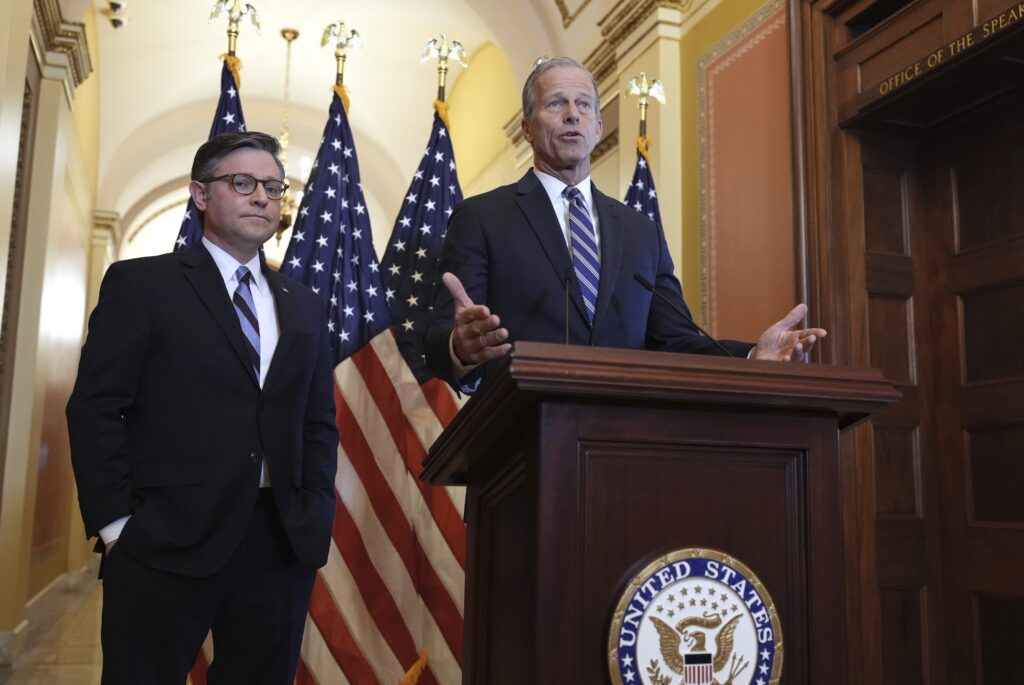In recent years, Congress has grappled with several high-profile legislative packages, from infrastructure bills to stimulus packages, all commanding significant attention due to their size and impact. However, as the nation faces evolving challenges, a new megabill looms on the horizon—one with the potential to shape the country’s economic, social, and environmental landscape for decades to come. This blog post explores the nature of this upcoming megabill, the issues at stake, and why Congress must act thoughtfully and decisively.

What Is a Megabill?
A megabill is a piece of legislation characterized by its massive scale and scope. It typically involves substantial government spending—often hundreds of billions or even trillions of dollars—and addresses multiple policy areas simultaneously. These bills are designed to tackle complex, systemic problems through comprehensive, multi-faceted approaches rather than piecemeal solutions.
Elon Musk vows to help defeat Republicans who vote for Trump’s megabill
Why Should Congress Worry About the Next Megabill?
Megabills carry both immense opportunity and risk. On one hand, they can provide the funding and policy framework necessary to address urgent national priorities—such as climate change, infrastructure modernization, healthcare reform, or economic recovery. On the other hand, their size and complexity can introduce challenges including fiscal sustainability, political polarization, legislative gridlock, and unintended economic consequences.
The next megabill Congress needs to worry about is one that will likely focus on climate change mitigation, clean energy transition, and economic resilience. This type of legislation aims to position the United States as a global leader in sustainability while simultaneously safeguarding workers and communities dependent on traditional industries.
The Context: Why Climate and Economic Resilience?
Climate Change as an Existential Threat
Scientific consensus confirms that climate change is accelerating, with consequences including extreme weather, rising sea levels, biodiversity loss, and disruptions to food and water supplies. These environmental shifts pose risks not only to public health and safety but also to economic stability. Addressing climate change requires urgent, large-scale investment in renewable energy, energy efficiency, and carbon reduction technologies.
Economic Resilience and Justice
Transitioning to a clean economy will reshape labor markets, creating new jobs while rendering some existing ones obsolete. Ensuring that this transition is just—meaning no communities or workers are left behind—is a critical policy challenge. Investments in retraining, infrastructure, and social safety nets will be necessary to support affected populations.
What Will the Next Megabill Likely Include?
1. Massive Clean Energy Investment
The heart of the bill will likely be a historic investment in clean energy infrastructure—solar, wind, hydroelectric, and emerging technologies such as green hydrogen and advanced nuclear power. This includes funding for research and development, manufacturing incentives, and grid modernization to accommodate renewable sources.
2. Transportation Overhaul
Transportation is one of the largest sources of greenhouse gas emissions. The bill will probably allocate funds for electric vehicle (EV) incentives, charging infrastructure, public transit expansion, and cleaner fuels. This aims to reduce emissions while improving mobility and access.
3. Energy Efficiency Upgrades
Buildings and homes consume significant energy. The megabill could support retrofitting existing structures with insulation, efficient heating and cooling systems, and smart technologies to reduce consumption and costs.
4. Support for Vulnerable Workers and Communities
There will be provisions for workforce development programs, community revitalization efforts, and financial assistance for regions heavily reliant on fossil fuel industries. The goal is to ensure equitable economic participation in the new green economy.
5. Climate Adaptation and Resilience
Recognizing that some climate impacts are unavoidable, the bill will likely fund infrastructure upgrades to protect against flooding, wildfires, and extreme weather events. This includes strengthening coastal defenses and improving water management.
6. Environmental Justice Initiatives
Communities of color and low-income populations often bear the brunt of environmental degradation. The bill will probably include measures to address pollution, improve health outcomes, and increase community engagement in environmental decision-making.
7. Fiscal and Regulatory Measures
To support these investments, Congress may consider changes to tax policies, such as carbon pricing or tax credits, as well as regulatory reforms aimed at speeding project approvals and reducing bureaucratic hurdles.
Challenges Congress Faces With This Megabill
Political Polarization
Climate legislation has long been a contentious issue, dividing lawmakers along ideological lines. Achieving bipartisan support will require negotiation and compromise, particularly on trade-offs between environmental goals and economic concerns.
Fiscal Responsibility
The size of the bill raises questions about the federal deficit and debt. Balancing urgent investment with long-term fiscal sustainability is a delicate act.
Implementation Complexity
Coordinating multiple agencies, ensuring accountability, and managing a vast portfolio of projects will test government capacity.
Industry Pushback
Fossil fuel industries and other vested interests may resist changes that threaten existing business models, complicating the legislative process.
Potential Economic and Social Benefits
If enacted effectively, the megabill could:
- Create millions of jobs in construction, manufacturing, and technology.
- Reduce greenhouse gas emissions significantly, contributing to global climate goals.
- Lower energy costs for consumers through efficiency gains.
- Improve public health by reducing air and water pollution.
- Strengthen national security by reducing dependence on foreign energy sources.
- Promote innovation and maintain U.S. competitiveness in emerging industries.
Conclusion: Why Congress Must Act Now
The next megabill represents an unprecedented opportunity to address intertwined crises of climate change, economic inequality, and infrastructure decay. Delay or inadequate action risks exacerbating environmental damage, economic disruption, and social unrest. Congress must approach this challenge with vision, pragmatism, and a commitment to inclusive, sustainable prosperity.
Q&A: Understanding the Next Megabill Congress Needs to Worry About
Q1: What exactly is the “next megabill”?
A: The next megabill refers to a large-scale legislative package primarily focused on combating climate change, transitioning to clean energy, and building economic resilience. It will involve massive government spending and policy changes across multiple sectors.
Q2: Why is climate change central to this megabill?
A: Climate change poses urgent risks to the environment, health, and the economy. The bill aims to reduce greenhouse gas emissions and prepare society for the impacts that are already unavoidable.
Q3: How will this megabill impact jobs?
A: It is expected to create millions of new jobs in renewable energy, infrastructure, and technology. At the same time, it will include programs to support workers displaced from fossil fuel industries.
Q4: What challenges could slow down or block this bill?
A: Political divisions, concerns over federal spending, industry lobbying, and the complexity of implementation are significant hurdles.
Q5: How will the bill ensure fairness and equity?
A: By including environmental justice provisions, workforce retraining, and community development funds aimed at historically marginalized populations.
Q6: What role will the private sector play?
A: The private sector will be essential for innovation, investment, and deployment of new technologies. The bill will likely include incentives and partnerships to encourage private involvement.
Q7: Could this bill raise taxes or increase the federal deficit?
A: Possibly. The bill may include new tax policies like carbon pricing but also aims to be fiscally responsible through economic growth and efficiency gains.
Q8: How soon could we see the effects of this megabill?
A: Some benefits, like job creation and infrastructure projects, could start within months to a few years, but climate impact reductions will be more gradual.
Final Thoughts
The next megabill Congress needs to worry about is not just a policy challenge but a defining moment for the nation’s future. It requires balancing ambition with pragmatism, and urgency with inclusivity. By understanding the stakes and engaging in informed dialogue, lawmakers and citizens alike can help shape a sustainable and equitable path forward.

